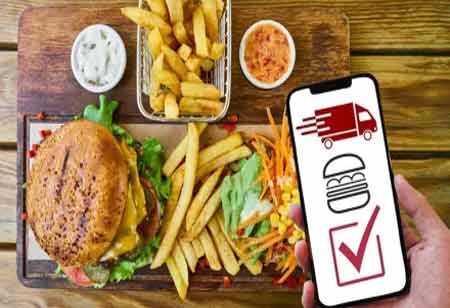THANK YOU FOR SUBSCRIBING
Be first to read the latest tech news, Industry Leader's Insights, and CIO interviews of medium and large enterprises exclusively from Food and Beverage Tech Review
Shaping Tomorrow's Meals: Tech-Driven Food Solutions
Food technology is developing to enhance efficient and sustainable food distribution, production, and consumption. Innovations that improve overall efficiency and nutrition include 3D-printed food, designer crops, food as medicine, protein fermentation, protein agriculture, and a digital supply chai

By
Food and Beverages Tech Review | Wednesday, March 19, 2025
Stay ahead of the industry with exclusive feature stories on the top companies, expert insights and the latest news delivered straight to your inbox. Subscribe today.
Fremont, CA: The field of food technology is constantly developing to find more sustainable and effective ways to produce, distribute, and consume food. The following are some encouraging developments in this area:
Protein Agriculture
Animal protein production significantly impacts greenhouse gas emissions worldwide. As a result, companies creating substitutes, primarily plant-based and, more recently, via cellular and molecular agriculture, are now competing. Cellular agriculture uses cultivated cells to produce animal tissues, proteins, and lipids. Conversely, molecular farming uses plant molecules as "mini dairy farms" to grow and duplicate animal proteins through photosynthesis.
Protein Fermentation
Protein fermentation is an inventive technique for obtaining animal proteins. There are two varieties of this process: biomass fermentation and precision fermentation. Precision fermentation uses genetically engineered organisms to produce dairy proteins, enzymes, lipids, and vitamins. In contrast, biomass fermentation uses fungus, yeast, or bacteria to create foods high in protein from organic material quickly. The manufacture of chymosin for parmesan cheese is one example.
Food as Medicine
Using food's therapeutic and nutritional qualities to support and restore health is a long-standing custom. But thanks to technological advancements, the idea of food as medicine has changed and taken on a more profound significance. Functional foods offer health advantages beyond their nutritional content, and nutraceuticals—which are made from food ingredients—may be able to treat illnesses. For instance, probiotic yogurt, cod liver oil, and milk with vitamin D added are examples.
3D-Printed Food
3D-printed food is a potential development that would allow users to create customized meals with particular forms, colors, realistic textures, and mouthfeel sensations. This technology would benefit the plant-based market and populations like those with autism, ARFID, or the elderly who might have sensory sensitivity issues, dysphagia, or other food-related disorders.
Designer Crops
Traditional agriculture is under stress from the growing global population, climate change, and unsustainable farming methods, which results in food shortages, spoiling, malnutrition, and insecurity. Designer crops provide increased resistance, yields, and nutrition through sophisticated breeding and gene editing. Pest-resistant bananas, reduced-cyanide cassava, and vitamin-enriched rice are more robust and nutrient-dense food sources.
Digital Supply Chain
Issues with accessibility, emissions, waste, and contamination plague today's food supply chain. Technologies like IoT, AI, blockchain, and automation make food tracking from farm to table, conditions monitoring during transportation, and data analytics for optimization possible. This digital revolution will result in a more intelligent, transparent, sustainable, and efficient food supply system.
I agree We use cookies on this website to enhance your user experience. By clicking any link on this page you are giving your consent for us to set cookies. More info







